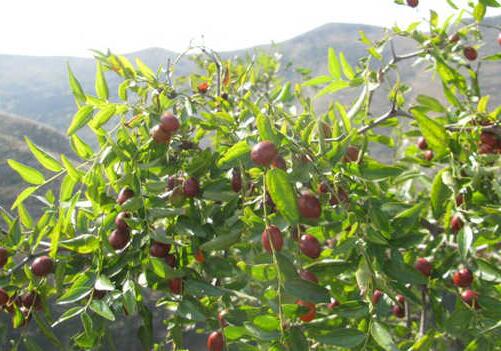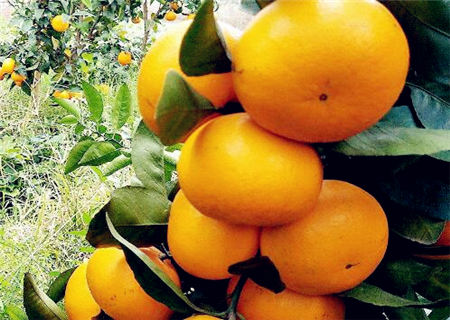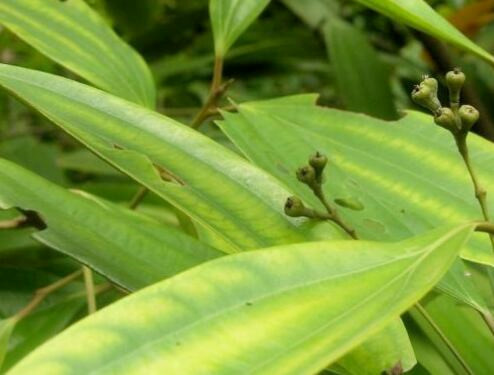How much does a bush jujube seedling cost? When do you plant it? How many years to blossom? What are the planting methods?
Sour jujube is a variety of jujube. Also known as thorn, thorn seed, wild jujube, mountain jujube, kudzu needle, etc., originated in North China, south-central provinces are also distributed. More wild, often for shrubs, and some for small trees. How much is the sour jujube seedling? When will you plant it? How many years will it blossom and bear fruit? What are the planting methods? It is learned from Hebei sour jujube planting base that the price of sour jujube seedlings is 1-2 yuan.

When will the seedlings of wild jujube be planted?
Planting wild jujube trees in autumn has the best survival, and the seedlings planted in autumn mainly have the following advantages:
The main results are as follows: 1. the autumn wild jujube can be planted from the festival in late October to the end of November, and it can make the planted wild jujube heal the root wound for a long time before the earth is frozen, so that it can grow well after spring.
2. The temperature is more suitable. Due to the gradual decline of air temperature in autumn, the water transpiration of wild jujube decreased gradually after planting, which was more beneficial to the survival of seedlings. And because the soil temperature drops more slowly than the air temperature, even if planted in late autumn, the physiological activities of the roots can still be carried out, and new roots grow in that year to restore vitality.
How many years does the wild jujube blossom and bear fruit?
1. Sour jujube red when ripe, then red-purple, mesocarp fleshy, thick, sweet, nuclear tip acute, base acute or obtuse, 2-loculed, with 1 or 2 seeds, pedicel 2-5 mm long; seeds flat-oval, about 1 cm long and 8 mm wide. The flowering period is from May to July and the fruiting period is from August to September.
2. Sour jujube seedlings usually bear fruit in the second year after planting. As the saying goes, "Peach, plum, four pear for five years, walnut and persimmon for six or seven years, mulberry can feed silkworms in seven years, and jujube trees can be sold for money." It means that the fruit period of wild jujube is short and the effect is quick.
What are the planting methods of wild jujube?
1. Selection of rootstocks of sour jujube seedlings:
Sour jujube seedlings with more than 2 years old, strong growth and no diseases and insect pests were selected as rootstocks. Truncate at 1 cm of rhizome.
2. Scion selection and preservation of sour jujube seedlings:
In winter jujube, pear jujube and other excellent variety orchards, 1-3-year-old developmental branches with a diameter of more than 4 mm and a length of more than 30 cm were selected as scions. Grafting can be used on demand in summer, and ear harvesting in autumn and winter can be stored in wax seal or freezer or cold storage, which can be kept for 50 ~ 60 days.
3. Grafting time and method of sour jujube seedlings:
It can start 2 ~ 3 weeks before spring germination, when the rootstocks are dormant, and the cambium is not detached, which is suitable for cutting and tongue grafting; from germination to the next 3 ~ 4 weeks, when the temperature reaches about 15 ℃, the phloem is easy to peel off, which is suitable for subcutaneous grafting; from late June to mid-July, the rootstock is detached and can be budded with an annual scion with a diameter of 3 mm ~ 4 mm. The high temperature period from mid-August to early September is the best time for subcutaneous grafting and tongue grafting, with the highest survival rate and sprouting in the next 10 days, but pay attention to "dressing" shade and moisturizing at this time. From late May to late June, branches, leaves and roots store a lot of nutrients, and the grafting interface is prone to bleeding, so it is not suitable for grafting.
4. Post-grafting management of sour jujube seedlings:
After the grafting survived, the sprouting should be removed in time, and the sprouts on the rootstock should be wiped every 7 to 10 days to reduce the loss of nutrients. At the same time, it is necessary to increase fertilizer and water management to ensure the nutrients needed for normal growth.
Time: 2019-03-19 Click:
- Prev

Where can I grow mandarin? How many years does it blossom? How many kilograms per mu? Attached high-yield cultivation techniques
The fertile mandarin mainly takes the early autumn shoot as the fruiting mother branch, and the fruiting shoot is mostly leafy flower branch, and the fruit setting rate is higher in the middle and lower part of the crown. So where can I grow oranges? How many years does it blossom? How many kilograms per mu? Now tidy up the high-yield cultivation techniques for you. Where can mandarin be planted? there is a history of planting in the north and south.
- Next

How much is cinnamon per jin? How to plant it? How do you eat it? What are the effects and effects?
Cinnamon, also known as cinnamon, cinnamon, Yushu, cinnamon, cinnamon, ping an tree, Chinese cinnamon, is the dry bark of cinnamon, a plant of Lauraceae. Originated in China, it is widely cultivated in tropical and subtropical areas of Guangdong, Guangxi, Fujian, Taiwan, Yunnan and other provinces. So, how much is cinnamon per jin? How to plant
Related
- Fuxing push coffee new agricultural production and marketing class: lack of small-scale processing plants
- Jujube rice field leisure farm deep ploughing Yilan for five years to create a space for organic food and play
- Nongyu Farm-A trial of organic papaya for brave women with advanced technology
- Four points for attention in the prevention and control of diseases and insect pests of edible fungi
- How to add nutrient solution to Edible Fungi
- Is there any good way to control edible fungus mites?
- Open Inoculation Technology of Edible Fungi
- Is there any clever way to use fertilizer for edible fungus in winter?
- What agents are used to kill the pathogens of edible fungi in the mushroom shed?
- Rapid drying of Edible Fungi

